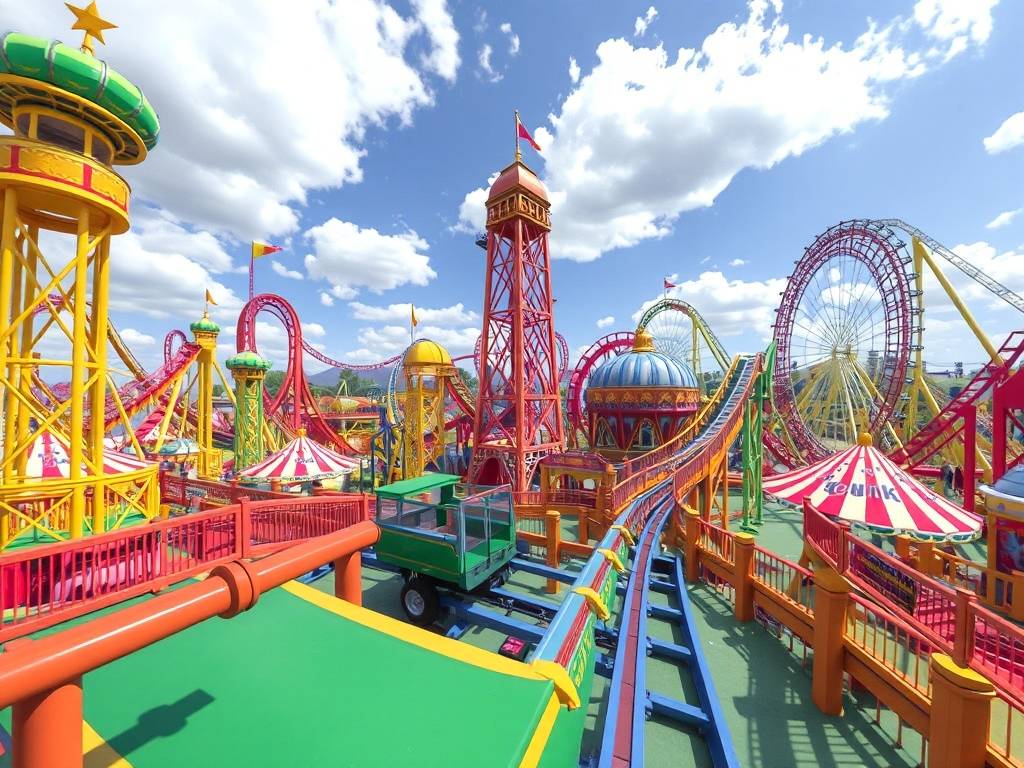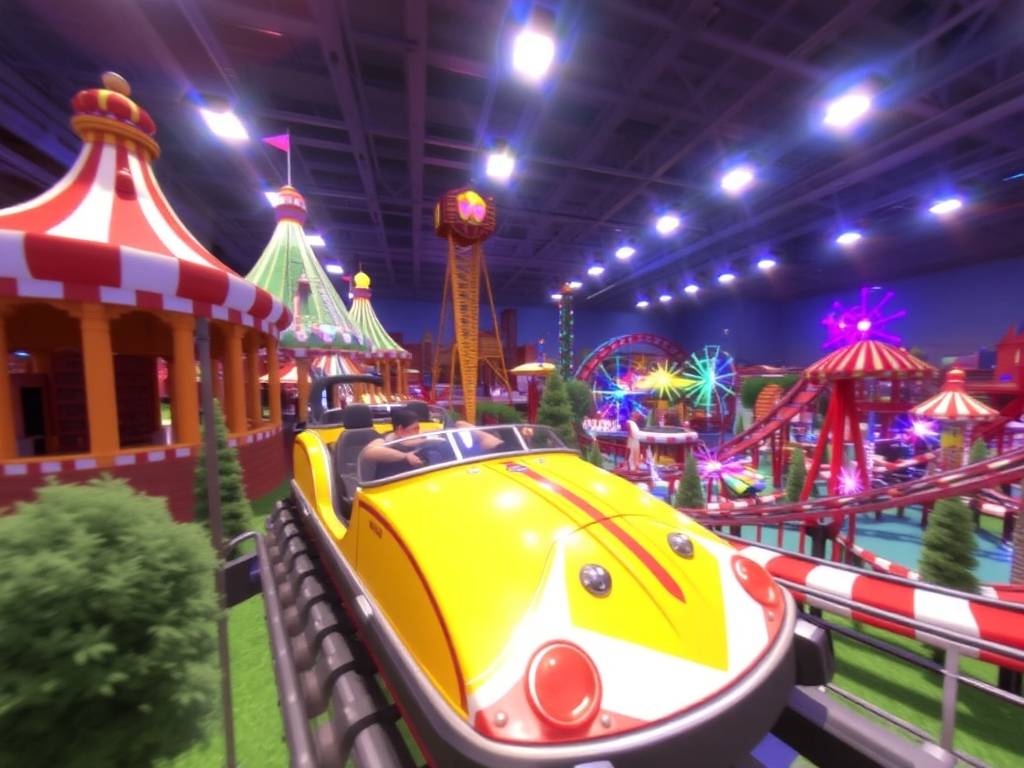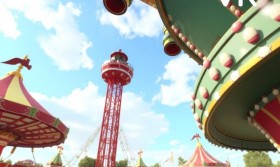The Ultimate Ride: How VR is Launching Amusement Park Museums into a New Dimension
There’s a certain magic to the classic amusement park. The smell of popcorn and funnel cakes, the distant clanking of a lift hill, and the unified screams of delight from a looping coaster are sensory experiences etched into our collective memory. But for roller coaster enthusiasts and history buffs, there's always been a lingering question: what about the rides that are gone? The legendary, ground-breaking coasters that were dismantled before we were born? For decades, the answer was to look at old photographs and grainy videos, a passive experience that left much to the imagination.
Enter the Amusement Park Museum, a concept once confined to static displays and retired train cars. But a powerful expansion is underway, one that is fundamentally reshaping how we experience the history and thrill of roller coasters. This evolution is powered by Virtual Reality, and it’s creating a new, immersive frontier where the past, present, and future of coaster design collide.

Beyond the Photo Gallery: Stepping into Living History

Traditional museums serve a vital purpose in preservation. Seeing the massive chain lift motor from a 1920s wooden coaster or the original blueprints for a revolutionary steel track is fascinating. But it’s a intellectual fascination. The new wave of Amusement Park Museums, enhanced by VR, transforms that intellectual curiosity into visceral, emotional experience.
Imagine this: instead of just reading about the "Cyclone" at Coney Island, you put on a VR headset. Suddenly, you're standing on the platform in 1927. You hear the creak of the wooden structure, the babble of the crowd in period clothing. You take a seat in the vintage-style train. The lap bar clicks into place. As the train lurches forward and begins its climb, you feel a genuine sense of anticipation. The view of a historically accurate Coney Island sprawls out before you. Then, the first drop. Your stomach lurches. The wind rushes past your ears. You experience the raw, unadulterated thrill of a classic wooden coaster in its prime, something no documentary can ever provide.
This is the core of the VR roller coaster museum experience. It’s not just a simulation; it’s a time machine. It solves the user's fundamental problem of wanting to feel the history, not just learn about it. For the first time, we can truly understand why our grandparents raved about a ride that has long since been reduced to splinters.
The Anatomy of a Virtual Thrill: More Than Just a Headset
A successful virtual reality amusement park archive relies on a sophisticated blend of technology and historical research. It’s not enough to create a generic roller coaster simulation. The authenticity is in the details.
- Historical Accuracy: Developers and historians work together to recreate every detail. This involves using archival photographs, engineering drawings, and first-hand accounts to model the ride’s exact layout, the surrounding environment, and even the soundscape. The goal is a historically accurate coaster simulation that is as close to the real thing as possible.
- Physical Sensation: While VR provides the visual and auditory immersion, the best installations incorporate physical elements to complete the illusion. A motion platform that tilts with the train, fans that simulate wind, and haptic feedback in the seats that rumble with the track joints all contribute to a fully immersive coaster experience. This multi-sensory approach is key to triggering the body's natural thrill responses, making the virtual ride feel astonishingly real.
- Interactive Learning: The experience doesn't have to be just a ride. Imagine pausing your virtual ride on the lift hill of "The Beast" at Kings Island. A menu appears, allowing you to highlight the structural engineering that allows such a massive wooden coaster to exist, or the unique topography of the land it was built on. This interactive theme park history lesson seamlessly blends education with entertainment, solving the user's desire for both fun and deep, contextual knowledge.
Preserving the Impossible: Coasters Lost to Time
One of the most powerful applications of this technology is in the digital preservation of classic roller coasters. Countless iconic rides have been demolished due to safety advancements, land disputes, or simply old age. They live on only in memory and media.
VR offers a form of digital resurrection. Rides like the "Original Batman: The Ride" from Six Flags Great America, or the pre-1994 "Disneyland Matterhorn" with its original bobsleds, can be experienced again by those who loved them and for the first time by new generations. This creates a thrilling amusement park museum attraction that is both nostalgic and novel. It addresses the user's pain point of "I wish I could have ridden that," and turns it into "I can."
Furthermore, this technology allows us to experience legendary rides that never even existed. Imagine riding a coaster designed by the legendary John Allen but never built, or experiencing a theoretical "perfect" hybrid coaster. The virtual reality amusement park archive becomes a sandbox for historical "what-ifs," expanding its role from a preservative one to a creatively speculative one.
A New Tool for Design and Safety
The benefits of this expansion extend beyond the museum walls. The same VR systems used for public entertainment are becoming invaluable tools for the amusement industry itself.
- Design and Prototyping: Before a single piece of steel is bent, engineers and designers can don a headset and "ride" their new creation. They can test sightlines, identify potential moments of negative G-force, and refine the layout in a virtual space at a fraction of the cost of physical prototyping. This immersive roller coaster design platform leads to better, safer, and more innovative rides.
- Safety Training: VR can simulate emergency scenarios for ride operators—from a simple mechanical stoppage on a lift hill to more complex situations—all in a completely safe, controlled environment. This allows for thorough training and muscle memory development without ever needing to disrupt actual park operations or put anyone at risk.
The Future of the Amusement Park Museum
The expansion of VR within this niche is leading to entirely new concepts. We are moving towards the ultimate virtual theme park destination—a single location where you can, in one afternoon, ride the top ten coasters from history, experience lost dark rides, and walk through parks that closed decades ago.
The social aspect is also evolving. Multi-user VR experiences will allow families and friends to share these virtual thrills together, screaming and laughing as they conquer the legendary loops of the "Loch Ness Monster" or the dizzying heights of "Kingda Ka," regardless of their physical location.
The integration of VR into Amusement Park Museums is more than a gimmick; it's a paradigm shift. It solves the core user problems of access, immersion, and education. It transforms a passive visit into an active adventure. It preserves our collective thrill-seeking heritage in the most dynamic way imaginable. This expansion is not about replacing the classic amusement park; it's about complementing it, creating a sacred space for the coasters of yesterday to thrill the riders of today and inspire the designers of tomorrow. So, the next time you hear about an Amusement Park Museum, don't just think of static displays. Think of a place where you can strap in, lower the headset, and scream your way through history. The ultimate ride through time has just begun.
















